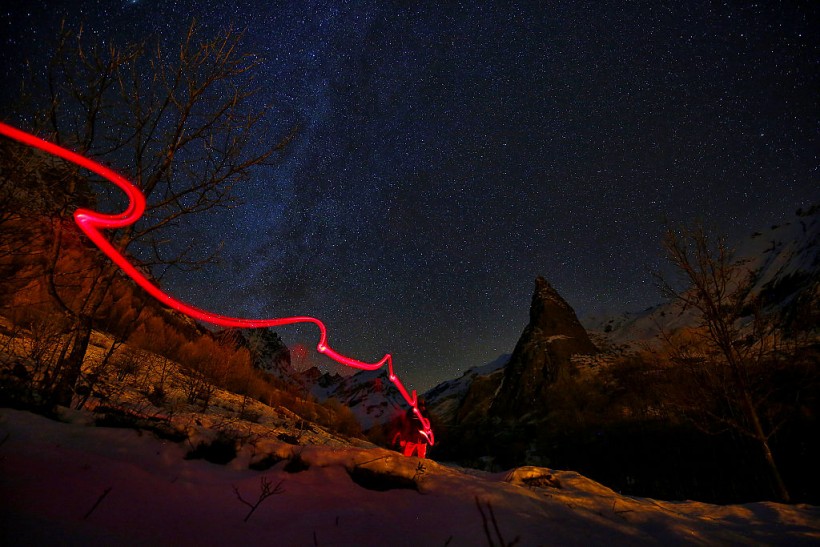In December 2022, there will be more than just Christmas lights shining at night. The Geminid meteor shower will peak the next week, the Ursid meteor shower will be at its finest later in the month, and the full moon on Wednesday, December 7, will illuminate the night sky.
Here are some facts about the forthcoming events to help you find your way through the night sky.

A picture taken at a slow speed shows a ray of red light from a torch of a photographer walking to see the annual Geminid meteor shower in the sky near Provenzales' rock in Maira Valley, northern Italy, on December 6, 2016.
December Full Moon - December 8
The December moon, commonly known as the "cold moon," will be 97% full on December 6, attain full illumination at 11:08 p.m. Eastern time on December 7, and be 100% full on December 8, according to MoonGiant.com. This is because December is the month when winter officially begins.
On December 9, the moon will be 98 percent full.
The "moon before yule" and the "long night moon" are a couple of the other names for the December full moon in addition to the "cold moon."
Geminid Meteor Shower - December 13
The yearly Geminids shower frequently produces 50 to 100 meteors per hour; in dark areas during its peak time, this number can reach 120 per hour.
The Geminid meteor shower began in late November. It will continue until Christmas Eve this year, but according to astronomy experts at EarthSky.org, the Geminids will be at their finest on Tuesday, December 13, into the early hours of Wednesday, December 14.
The moon will be almost 75% full, making it probable challenging to view even the weakest meteors. However, experts said the Geminids are known to generate white and brilliant meteors, so many should be seen this year.
ALSO READ: Meteorites Detected in Canada Hours After the Discovery of a Small Asteroid
It is recommended to find a viewing spot away from bright city lights or street lights, as it is with every meteor shower.
The Geminid meteor shower is made up of tiny pieces of the asteroid 3200 Phaethon, unlike most meteor showers, which come from comets. The Quadrantids are a meteor shower with an asteroid connection and peak in early January.
According to TimeAndDate.com, the Geminid meteor shower is named after Gemini's constellation because it appears to be where the meteors are coming from in the sky.
Ursid Meteor Shower - December 17
The Ursid meteor shower, which will be visible in the northern hemisphere from December 17 through December 26, will be the last meteor shower of 2022. Its peak is predicted to occur around the late-night hours of December 22 into the early morning hours of December 23.
Space.com says visibility should be favorable for the Ursid meteor shower in 2022. The new moon will be on December 23. Therefore there won't be any dazzling moonlight in the sky.
Only five to ten shooting stars are typically produced during the Ursid meteor shower every hour, with the largest numbers occurring in the darkest regions. However, this meteor shower occasionally outperforms itself.
RELATED ARTICLE: Final Total Lunar Eclipse To Occur on Election Day 2022; Will You See It Again Next Year?
Check out more news and information on Space in Science Times.












![Sat-Nav in Space: Best Route Between Two Worlds Calculated Using 'Knot Theory' [Study]](https://1721181113.rsc.cdn77.org/data/thumbs/full/53194/258/146/50/40/sat-nav-in-space-best-route-between-two-worlds-calculated-using-knot-theory-study.png)

